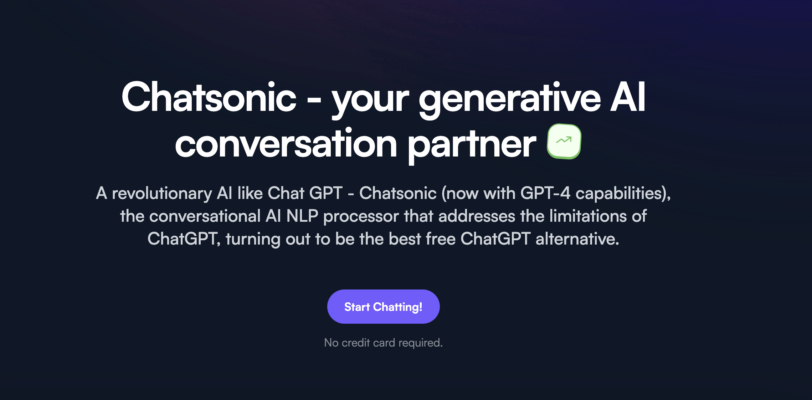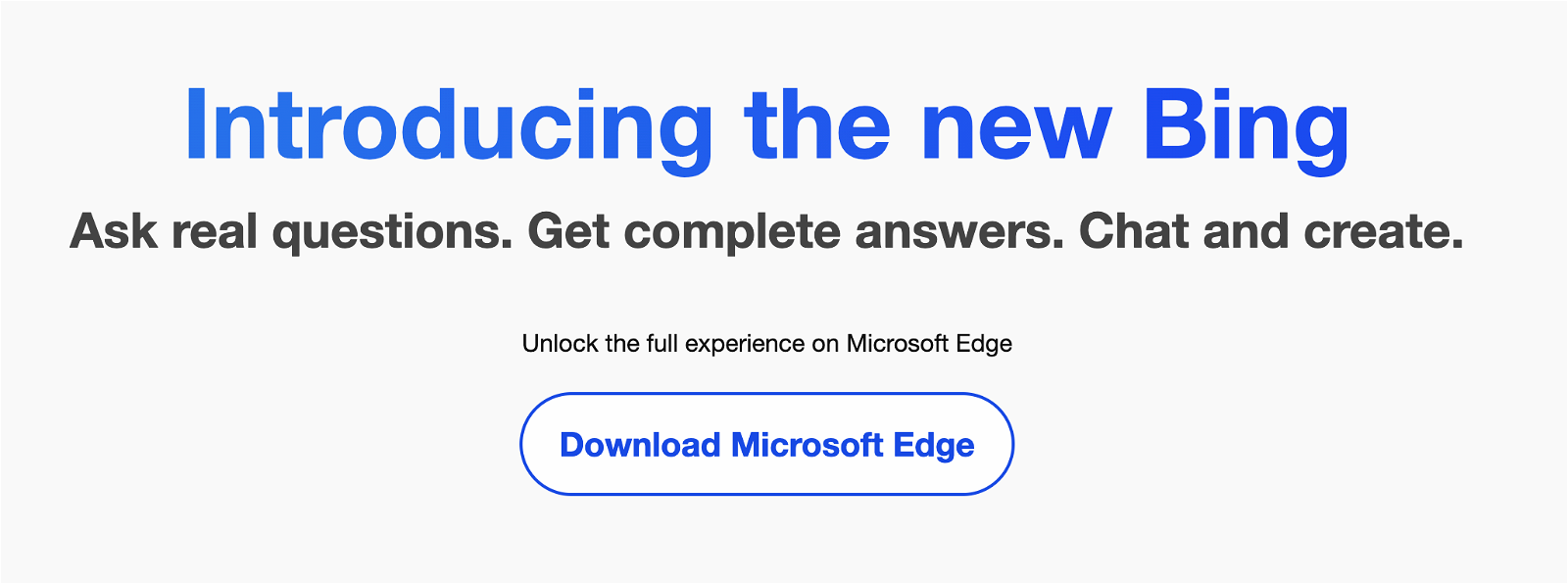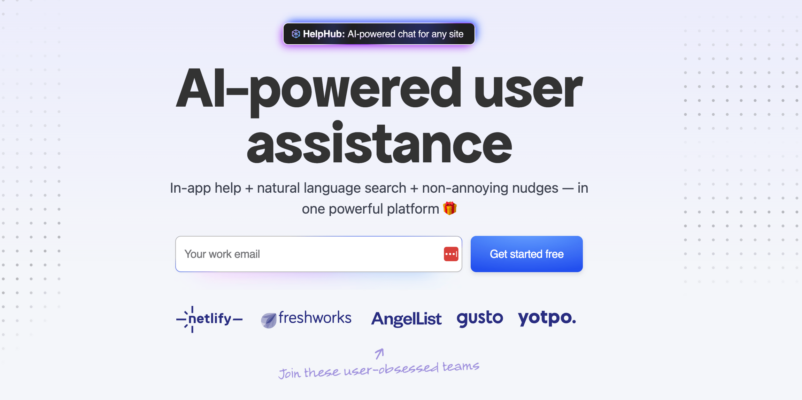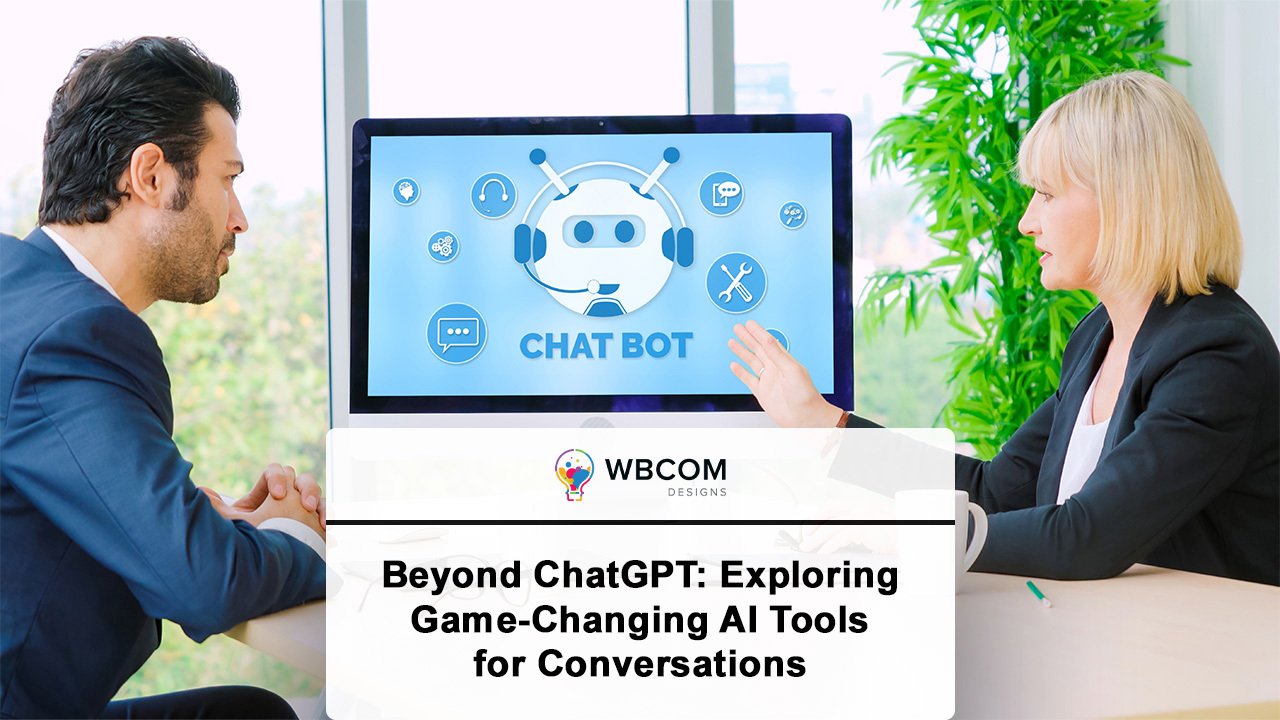Artificial Intelligence (AI) has revolutionized the way we interact with technology, and conversational AI is at the forefront of this transformation. While ChatGPT has gained recognition as a powerful conversational AI tool, there are other game-changing alternatives that push the boundaries even further. In this blog, we will dive into the world of AI tools beyond ChatGPT and explore the cutting-edge innovations that are reshaping the landscape of conversational AI.
Table of Contents
Toggle1. Chatsonic

Chatsonic is a revolutionary AI conversational partner that outshines ChatGPT with its GPT-4 capabilities. It offers several unique benefits, including integrated Google search for up-to-date information, AI image generation, voice commands for hands-free interaction, excellent memory recall for answering follow-up questions, Text2Speech functionality similar to Siri or Google Assistant, and the ability to edit, copy, download, and share specific responses or entire conversations. Furthermore, Chatsonic allows users to engage with it as different personalities, such as a teacher or fitness trainer. With these remarkable features, Chatsonic proves to be the ultimate free alternative to ChatGPT.
Chatsonic is a revolutionary AI conversational partner that outshines ChatGPT with its GPT-4 capabilities. It offers several unique benefits, including integrated Google search for up-to-date information, AI image generation, voice commands for hands-free interaction, excellent memory recall for answering follow-up questions, Text2Speech functionality similar to Siri or Google Assistant, and the ability to edit, copy, download, and share specific responses or entire conversations. Furthermore, Chatsonic allows users to engage with it as different personalities, such as a teacher or fitness trainer. With these remarkable features, Chatsonic proves to be the ultimate free alternative to ChatGPT.
2. The New Bing

The new Bing search engine introduces a set of AI-powered features that make it more than just a traditional search tool. It acts as a research assistant, personal planner, and creative partner, providing detailed replies to complex questions and summarizing search results to give actual answers. With Bing, users can unleash their creativity by receiving inspiration and assistance in writing poems, stories, or generating ideas for projects. The chat experience allows for natural conversation and follow-up questions, enabling personalized replies. Additionally, Bing’s image creator feature generates customized images based on user descriptions, adding a visual element to the search experience. Overall, Bing aims to provide a comprehensive and innovative search experience that goes beyond generating a list of links by consolidating reliable sources and delivering detailed, personalized responses.
3. Bard

Google’s “Bard” is an impressive language model that pushes the boundaries of natural language processing and generation. Built upon the foundation of Google’s research on neural networks and deep learning, Bard demonstrates a remarkable ability to generate poetry that mimics human creativity and expression. This AI-powered language model leverages its vast knowledge of diverse poetic forms, styles, and themes to compose original verses that capture the nuances of language and evoke emotional responses. Whether it’s crafting sonnets, haikus, or free verse, Bard showcases an understanding of rhythm, meter, and literary devices, breathing life into words and painting vivid imagery. It exemplifies the advancements made in AI-generated content, transcending mere automation to produce artistic expressions that resonate with readers. Google’s Bard not only serves as a fascinating tool for creative exploration but also pushes the boundaries of what is possible in AI-generated content, opening new avenues for artistic collaborations and showcasing the potential for AI to augment human creativity.
4. SWOON

Swoon is an AI dating wingman that offers personalized advice to improve your chances of success on dating apps. By analyzing your messages, Swoon provides tailored recommendations to help you stand out and increase your likelihood of getting responses and going on dates. With Swoon, you can save time and skip the guesswork, allowing you to focus on enjoying the dating experience while boosting your chances of finding a meaningful connection.
5. Fliki

Fliki is a powerful AI-powered tool that allows users to transform text into engaging videos with lifelike AI voices. With Fliki, creating captivating content in the form of text-to-video and text-to-speech has never been easier. By simply inputting a blog article URL, Fliki utilizes AI to summarize the content, curate visuals that perfectly align with the text, and generate a video with a human-like voiceover in the desired voice, complete with branded subtitles.
Gone are the days of using robotic voices in videos, as Fliki offers a wide range of over 1000 neural voices in 75 different languages. This ensures that users can find a voice that suits their needs and helps them sound human and natural.
Fliki also provides a rich stock media library, boasting millions of images, video clips, and background music to choose from. This vast collection ensures that users have an abundance of options when selecting visuals that complement their content and scenes.
6. Helphub

HelpHub, developed by CommandBar, is an innovative platform that offers AI-powered user assistance within applications. Built with the goal of creating a natural language interface for the internet, HelpHub combines the strengths of traditional user help resources, such as help docs and human-authored FAQs, with the power of AI chatbots.
With the rise of AI, software interfaces are poised for significant transformation. HelpHub embraces this change by introducing an AI-driven chatbot that can assist users in a personalized and dynamic manner. By leveraging AI capabilities, HelpHub opens up new opportunities to provide tailored assistance that was previously impractical.
Through HelpHub, any website or application can integrate an AI-powered chatbot that engages users in natural language conversations. This chatbot goes beyond the limitations of static help documents and FAQs, offering real-time and context-specific guidance to users within the application itself.
Conclusion
While ChatGPT has made significant strides in conversational AI, exploring beyond its capabilities opens up a world of game-changing AI tools. Dialogflow, Rasa, IBM Watson Assistant, Microsoft Bot Framework, Wit.ai, and Amazon Lex are just a few examples of the powerful alternatives available. These tools empower developers to create intelligent chatbots, virtual assistants, and conversational agents that deliver personalized and engaging experiences. As the field of conversational AI continues to advance, embracing these game-changing AI tools will unlock new possibilities and shape the future of human-machine interactions.






